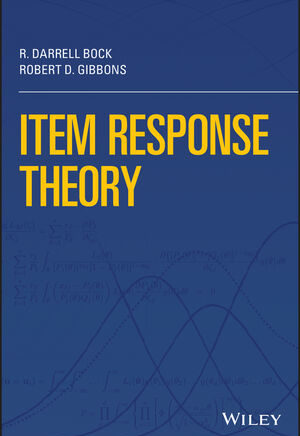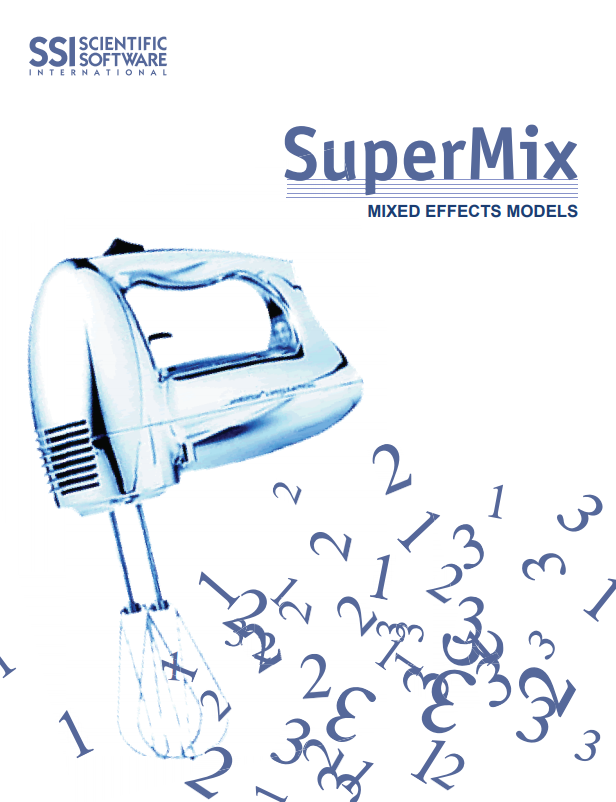Mixed-effects regression models for the analysis of clustered and longitudinal data
Application of item response theory and computerized adaptive testing to problems in mental health measurement
Problems in the analysis of high-dimensional datasets that are encountered in ecological momentary assessments, fMRI and microarray studies
Interval estimation including prediction, tolerance, and confidence intervals for environmental monitoring problems
R. DARRELL BOCK
Influential scholar of educational metrics, 1927-2021
“A longtime UChicago faculty member in the Departments of Psychology and Comparative Human Development, Bock was best known for his influential work on educational metrics and his many contributions to the statistical framework known as item response theory (IRT), a term that he introduced which is still widely used.”
VIEW OBITUARYCHS In the News
The Center for Health Statistics, and its numerous faculty members, frequently make headlines in the health sciences realm. Explore some of the latest blog posts and news articles from CHS faculty.
National Academies: A Fairer and More Equitable, Cost-Effective, and Transparent System of Donor Organ Procurement, Allocation, and Distribution
An ad hoc committee of the National Academies of Sciences, Engineering, and Medicine will conduct a study to examine the economic (costs), ethical, policy, regulatory, and operational issues relevant to organ allocation policy decisions. CHS Faculty member Dr. Will Parker contributed to a commissioned paper on survival benefit.
READ MOREUChicago Committee on Quantitative Methods: Robert Gibbons co-authors new book on Item Response Theory with Darrell Bock
A comprehensive and up-to-date exploration of the theoretical foundations and applications of Item Response Theory (IRT).
READ MOREBloomberg Law: Telehealth Takes on Pregnancy Depression Amid Payment Barriers
Tools like CAT-MH™, which is being used at some Veterans Affairs facilities and university hospitals, have the potential to help doctors better diagnose and manage depression, anxiety, and other conditions in their pregnant patients.
READ MORENBC News: Laughing gas shows promise for treatment-resistant depression, small trial finds
Nearly one-third of people with depression don’t respond to widely available treatments, highlighting the need for medications that work in different ways.
READ MOREUChicago Med: Hospitals given latitude to select heart transplant candidates don’t always prioritize sickest patients
“Analysis of more than 29,000 adults listed on the national heart transplant registry from 2006 to 2015 shows how rules that give…”
READ MOREReuters, Children of opioid users more likely to attempt suicide: U.S. study.
“The U.S. opioid crisis is taking a toll on children of users as a study published on Wednesday showed they were more likely to attempt suicide.”
READ MOREA few things we’ve recently published…
National Academies of Sciences, Engineering, and Medicine: Realizing the promise of equity in the organ transplantation system
Each year, the individuals and organizations in the U.S. organ donation, procurement, allocation, and distribution system work together to provide transplants to many thousands of people, but thousands more die before getting a transplant due to the ongoing shortage of deceased donor organs and inequitable access to transplant waiting lists.
Committee on a Fairer and More Equitable, Cost-Effective, and Transparent System of Donor Organ Procurement, Allocation, and Distribution
JAMA Network: Development and Validation of Computerized Adaptive Assessment Tools for the Measurement of Posttraumatic Stress Disorder Among US Military Veterans
Veterans from recent and past conflicts have high rates of posttraumatic stress
disorder (PTSD). Adaptive testing strategies can increase accuracy of diagnostic screening and symptom severity measurement while decreasing patient and clinician burden.
Brenner L.A., Betthauser L.M., Penzenik M., … Gibbons R.D.
JAMA Psychiatry: Prospective Development and Validation of the Computerized Adaptive Screen for Suicidal Youth (CASSY)
The rate of suicide among adolescents is rising in the US, yet many adolescents at risk are unidentified and receive no mental health services. In this study, the adaptive and personalized CASSY demonstrated excellent suicide attempt risk recognition, which has the potential to facilitate linkage to services.
King C.A., Brent D., Grupp-Phelan J., Casper T.C., … Gibbons R.D.
Science: Reduced false positives in autism screening via digital biomarkers inferred from deep comorbidity patterns
Veterans from recent and past conflicts have high rates of posttraumatic stress
disorder (PTSD). Adaptive testing strategies can increase accuracy of diagnostic screening and symptom severity measurement while decreasing patient and clinician burden.
Onishchenko D., Huang Y., van Horne J., Smith P.J., Msall M.M., Chattopadhyay I.
PLOS Computational Biology: Universal risk phenotype of US counties for flu-like transmission to improve county-specific COVID-19 incidence forecasts
While the key factors shaping transmission of influenza and COVID-19 are beginning to be broadly understood, making precise forecasts on case count and mortality is still difficult. This study demonstrates that knowledge of past epidemics may be used to chart the course of future ones, if transmission mechanisms are broadly similar, despite distinct disease processes and causative pathogens.
Huang Y., Chattopadhyay I.
HDSR: Medications and Suicide: High Dimensional Empirical Bayes Screening (iDEAS).
The objective of this study is to develop a statistical surveillance methodology based on generalized mixed-effects regression models applied to analysis of large-scale medical claims and medical records that identifies drugs associated with increased and decreased risk of suicidal events.
Gibbons R.D., Hur K., Lavigne J., Wang J., Mann J.J.
Cerebral Cortex: Associating Psychotic Symptoms with Altered Brain Anatomy in Psychotic Disorders Using Multidimensional Item Response Theory Models
Researchers aimed to identify the regions throughout neocortex where clinical psychosis manifestations correlate with cortical thickness. When they tested the relationship between reduced cortical surface area and high psychotic symptoms they found no linked regions describing a related cortical set.
Stan, A.D., Tamminga, C.A., Han, K., Kim, J.B., Padmanabhan, J., Gibbons, R.D., et al.
Schizophrenia Research: Development of a computerized adaptive diagnostic screening tool for psychosis.
Researchers developed a two-stage diagnostic classification system for psychotic disorders using an extremely randomized trees machine learning algorithm. The item bank was developed from clinician-rated items drawn from an inpatient and outpatient sample.
Gibbons R.D., Chattopadhyay I., Meltzer H., Kane J.M., and Guinart D.
JAMA Network: Development and Validation of Computerized Adaptive Assessment Tools for the Measurement of Posttraumatic Stress Disorder among United States Military Veterans
Veterans from recent and past conflicts have high rates of posttraumatic stress disorder (PTSD). Adaptive testing strategies can increase accuracy of diagnostic screening and symptom severity measurement while decreasing patient and clinician burden.
Brenner L.A., Betthauser L.M., Penzenik M… Gibbons R.D. et al.
Recent and Upcoming Events and Talks
The Center for Health Statistics, and its numerous faculty members, frequently host seminars and workshops, give lectures, and deliver keynotes. Be sure not to miss an upcoming event!
2-Day Seminar by Dr. Donald Hedeker: Multilevel Modeling of Categorical Outcomes
This workshop will focus on analysis of dichotomous, ordinal and nominal multilevel outcomes. This is a hands-on course with at least one hour each day devoted to carefully structured and supervised assignments. It will be held Thursday, June 11, 2020 9:00 AM – Friday, June 12, 2020 5:00 PM (ET) at Temple University Center City.
Watch Now: Professor Robert D. Gibbons at the National Academy of Sciences, Engineering, and Medicine (NASEM) Forum on Mental Health and Substance Use Disorders Public Workshop
This workshop, held October 15-16, focused on using data to improve care service delivery and patient outcomes. Other speaker presentations of the workshop can be found here.
Donald Hedeker to Host Seminar on Intensive Longitudinal Methods
If you plan on analyzing EMA or other forms of intensive longitudinal data, this course is for you. Participants should be thoroughly familiar with multiple linear regression, and some knowledge of mixed models (i.e. multilevel/HLM) is helpful, but not assumed. The seminar will be held at Temple University Center City on November 15-16, 2019.
The second issue of the Harvard Data Science Review has launched!
As an open access platform of the Harvard Data Science Initiative, Harvard Data Science Review (HDSR) features foundational thinking, research milestones, educational innovations, and major applications. It aims to publish contents that help to define and shape data science as a scientifically rigorous and globally impactful multidisciplinary field based on the principled and purposed production, processing, parsing and analysis of data.
LEARN MOREHOT OFF THE PRESS
Dr. Robert Gibbons co-authors new book on Item Response Theory with Dr. Darrell Bock
In Item Response Theory, accomplished psychometricians Darrell Bock and Robert Gibbons deliver a comprehensive and up-to-date exploration of the theoretical foundations and applications of Item Response Theory (IRT). Covering both unidimensional and multidimensional IRT, as well as related adaptive test administration of previously calibrated item banks, the book addresses the growing need for understanding of this topic as the use of IRT spreads to other fields.
READ MOREThe Committee on Quantitative Methods in Social, Behavioral, and Health Sciences
This is an interdisciplinary community of faculty and students interested in methodological research in relation to applications in social, behavioral, and health sciences.
LEARN MOREFeatured Tool: SuperMix
SuperMix combines the functionality of four mixed-effects programs, MIXREG, MIXOR, MIXNO, and MIXPREG, developed by Donald Hedeker and Robert Gibbons into a single application to provide estimates for mixed-effects regression models.
SuperMix has been developed by SSI under an SBIR Phase II contract N44MH32056. SuperMix will fit models with continuous, count, ordinal, nominal, and survival outcome variables with nested data, allowing for up to three levels of nesting.
MIXED-EFFECTS MODELING
Mixed-effects models are also known as multilevel, hierarchical, or random-effects models. These models can be used for the analysis of longitudinal data, where each individual may be measured at a different number of occasions. They can also be used for clustered data, such as for patients within clinics.
FREE STUDENT EDITION
A student version of SuperMix for Windows can be downloaded from SSI: Scientific Software International.
LEARN MOREThe Statistics of CHS
We offer a rich statistical talent that is rarely found in a single department, let alone a center. Under the direction of Professor Robert D. Gibbons, the Center quickly grew to include a faculty of 32 members both from the University of Chicago and in collaboration with other Universities.



